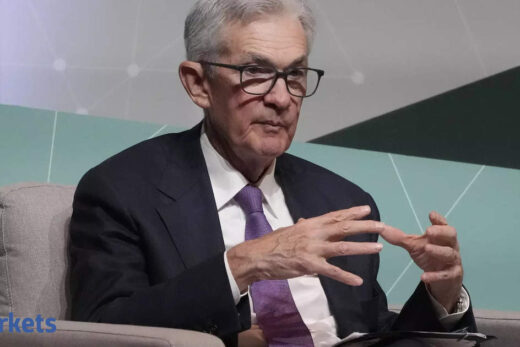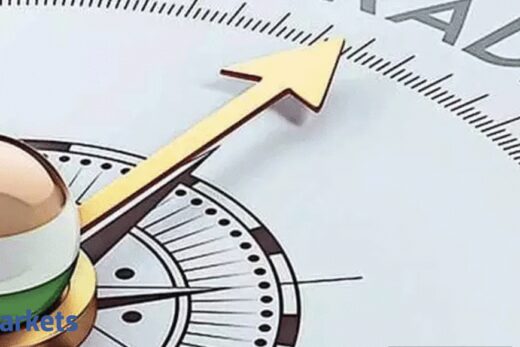Federal Reserve Chair Jerome Powell is expected to maintain aggressive US economic support, even as faster vaccinations have brightened the outlook for recovery.
The Federal Open Market Committee is all but certain to hold interest rates near zero at the conclusion of a two-day policy meeting Wednesday, and repeat a vow to keep buying bonds at the current $120 billion monthly pace. The panel will release a statement at 2 p.m. in Washington and Powell will hold a press briefing 30 minutes later. No quarterly forecasts are published at this meeting.
“The Fed is trying to convey a very dovish tone as long as the pandemic remains a threat,” said Stephen Stanley, chief economist at Amherst Pierpont Securities LLC. “Until we get to that point, they are going to continue to say the economy is getting better but we need to see more evidence. We are not out of the woods yet.”
Powell, in an interview with CBS’s “60 Minutes” broadcast April 11, said the US economy is at an “inflection point” with economic growth and job creation quickening in response to vaccinations and both fiscal and monetary support. Yet he emphasized continuing risks to the outlook, including from renewed spread of Covid-19, adding: “The Fed will do everything we can to support the economy for as long as it takes to complete the recovery.”
The improved outlook will be underlined by the government’s report of first-quarter gross domestic product Thursday, expected to show a 6.9% increase, according to economists surveyed by Bloomberg.
 Bloomberg
Bloomberg
Asset Purchases
The FOMC is likely to reiterate its plan to start slowing asset purchases once the panel concludes there’s been “substantial further progress” in meeting its employment and inflation goals. Inflation has edged higher and the US added 916,000 new jobs last month, but the committee may see progress as still far from its objectives.
While the FOMC has been intentionally vague on benchmarks it wants to achieve, economists surveyed by Bloomberg expect tapering to be announced during the fourth quarter, when the unemployment rate is at around 4.5% with the inflation rate at 2.1%.
What Bloomberg Economics Says…
“The FOMC will maintain a steady trajectory at the April meeting. Policy makers continue to remain firmly committed to the policy glide path they instituted in 2020 for both interest rates and asset purchases. To be sure, the economic outlook is improving in response to fiscal stimulus and ongoing progress on vaccinations; even so, a wide range of officials continue to advocate patience with respect to any hints of impending policy normalization.”
— Carl Riccadonna, Yelena Shulyatyeva, Andrew Husby and Eliza Winger, economists
FOMC Statement
Recent robust data will require the FOMC to upgrade its description of the US economy, acknowledging the strong March jobs report while also describing unemployment as elevated.
Though inflation has ticked up, the committee could discount its significance, which would be consistent with policy makers’ frequently repeated views that price gains this year will reflect temporary factors such as supply issues and year-ago price drops as the pandemic took hold.
 Bloomberg
BloombergThe forward guidance in the statement about bond buying and interest rates is expected to be unchanged, reflecting the committee’s goals to achieve full employment and some overshooting of 2% inflation before lifting near-zero rates.
“Clearly they want to take no chances on getting a hot economy even at the risk of overshooting the desired overshoot,” said Ethan Harris, Bank of America Corp.’s head of global economic research.
Press Conference
Powell could emphasize the FOMC’s new monetary policy framework, approved last August, in explaining why the Fed isn’t poised to respond to strengthening data. He might stress the goal of delivering a more inclusive labor market, in which minorities and low-income workers share in rising employment and pay, which has happened only during a maturing recovery.
“They want to see gains across all sorts of demographics, including wage pressures that come with full employment,” said Gus Faucher, chief economist at PNC Financial Services Group. “There are still big pockets of weakness in the labor market. There is still a long way to go, with 8 million jobs lower than before the pandemic.”
 Bloomberg
BloombergPowell has declined to talk directly about his desire for a second term as Fed chair when his current tenure expires in February 2022, though he’s said that he loves the job, giving the impression he’d be happy to stay at the helm. About three-quarters of economists surveyed by Bloomberg believe President Joe Biden will offer him that opportunity.
Powell could also be asked about the Bank of Canada’s move last week to begin paring back its monetary support and whether this highlights the risk of the Fed maintaining its stimulus for too long. While he could choose to contrast conditions between the US and its northern neighbor, as well as differences with the BoC’s policy framework, “central banks don’t like commenting on each other’s policies, so he may just evade the question,” said Jonathan Wright, an economics professor at Johns Hopkins University and a former Fed economist.
IOER
Economists say it’s possible the Fed could tweak its interest rate on excess reserves, currently 0.10%. But such a move would be a technical adjustment that has no monetary-policy implications. Fed policy makers will be “monitoring money markets closely and will continue to make adjustments as needed,” New York Fed Executive Vice President Lorie Logan said in a speech this month.



